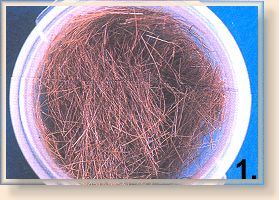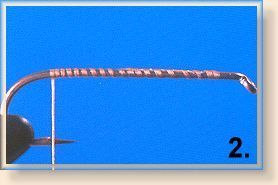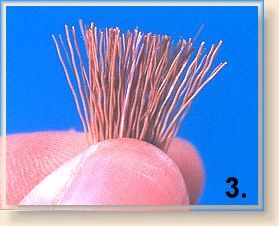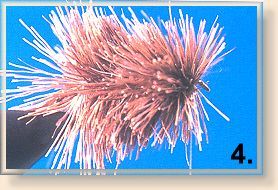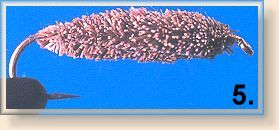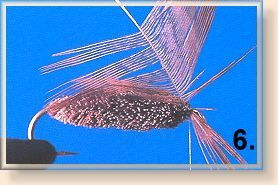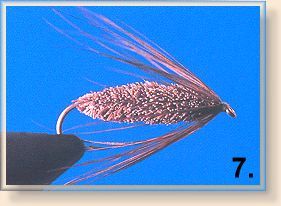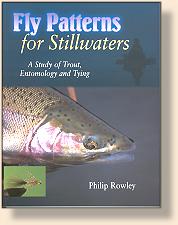
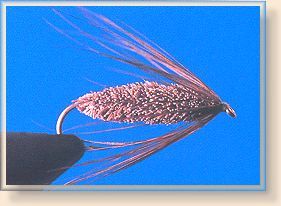 Dunc's Floating Carey By Philip Rowley
|
|
|
1. Combine various colors of deer hair in a container
in the same manner as blending different colors of dubbing.
It is a good idea to make notes of successful color combinations
and to make enough for a number of patterns.
2. Cover the hook shank with thread. Leave tying thread
hanging at the rear of the hook. Don't build up too much
thread on the hook shank as this inhibits spinning the body.
3. Select a stack of pre-mixed deer hair. About the
diameter of a pencil is fine.
4. Spin a body of deer hair all the way up to the hook
shank. Resist the urge to pack it. Remember to leave
room for the head.
5. Tie off the thread and remove the fly from the vise.
Trim the body to a cigar shape with a fat rear end and
sloping towards the eye. Keep the gap clear so as not
to impede the hooking ability of the fly.
6. Re-attach the tying thread at the eye. Select an
appropriate pheasant rump feather. The individual
fibers should be no longer than the body. Prepare the
feather by stripping away the flue. Tie in the hackle
feather by the tip with the shiny side of the feather
facing towards the tier, ensuring the fibers will sweep
back along the body.
7. Wind the hackle a maximum of 3 times. Tie off and
trim excess hackle. Build a neat head. Whip-finish and
apply head cement.
Credits: From the terrific new book Fly Patterns for Stillwaters by Philip Rowley, published by
Frank Amato Publications. We greatly appreciate use permission.
For more great flies, check out:
Beginning Fly Tying,
Intermediate Fly Tying and Advanced
Fly Tying.
|
